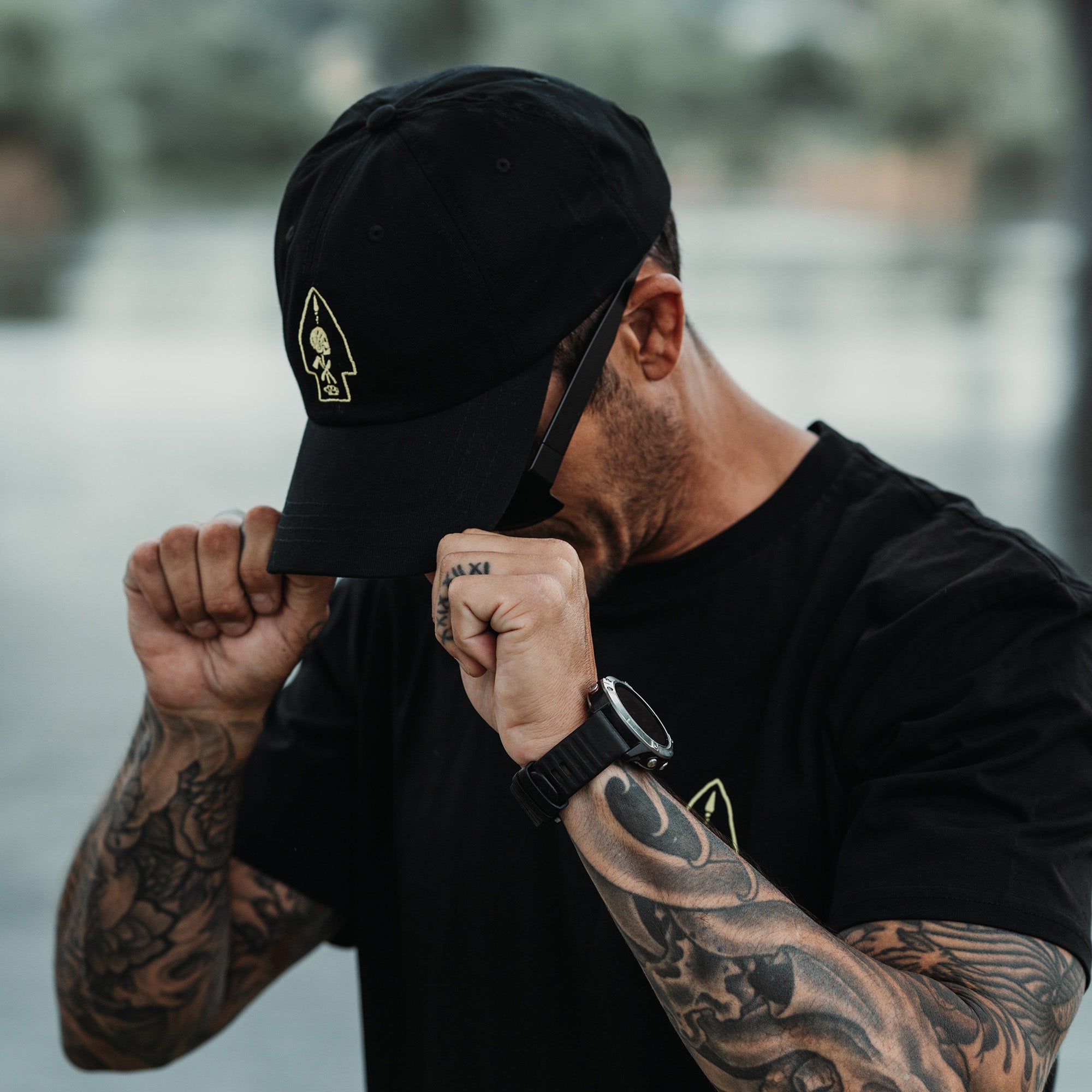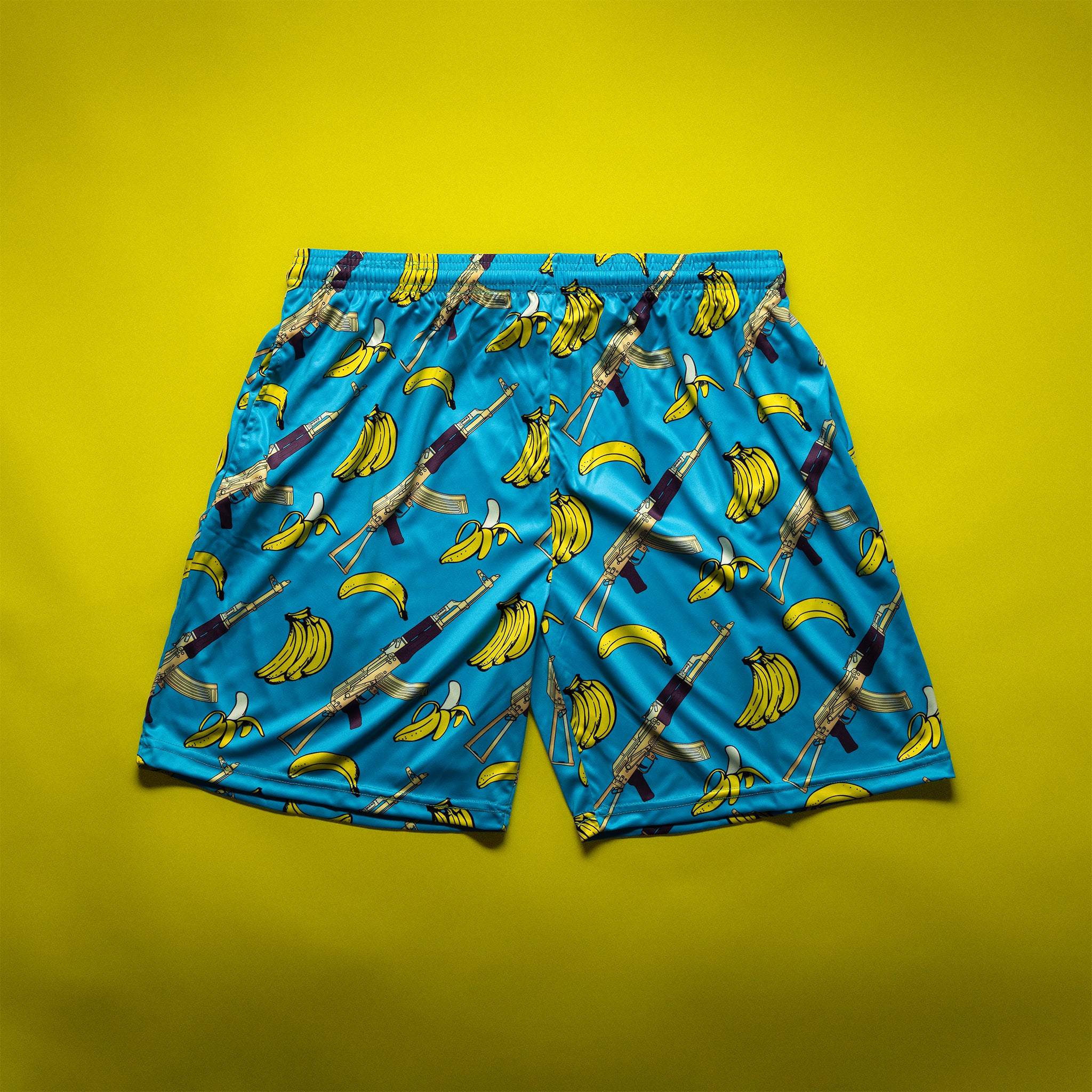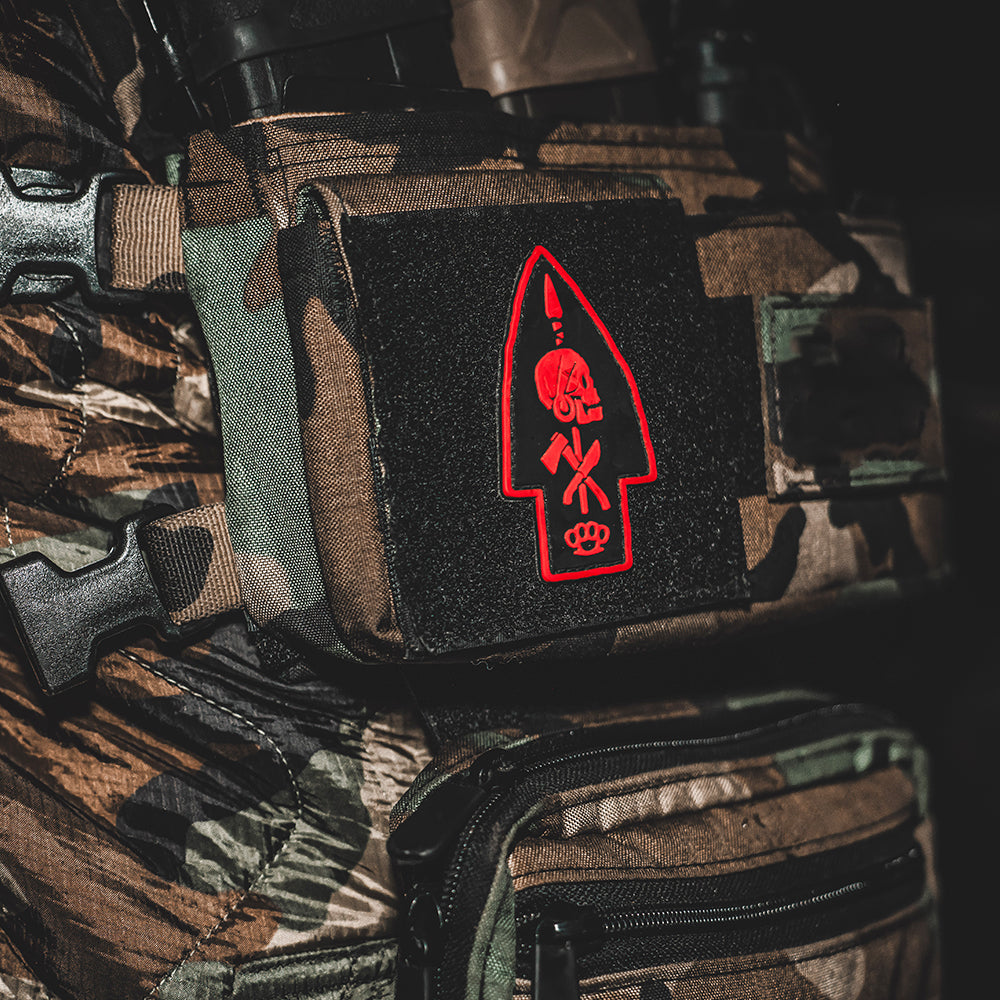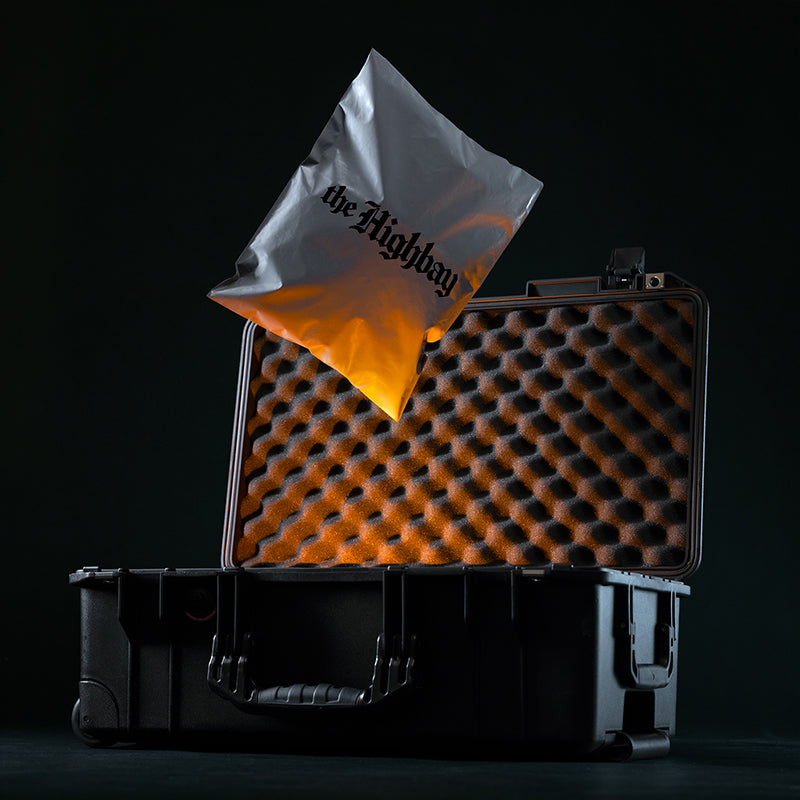Article: Captagon
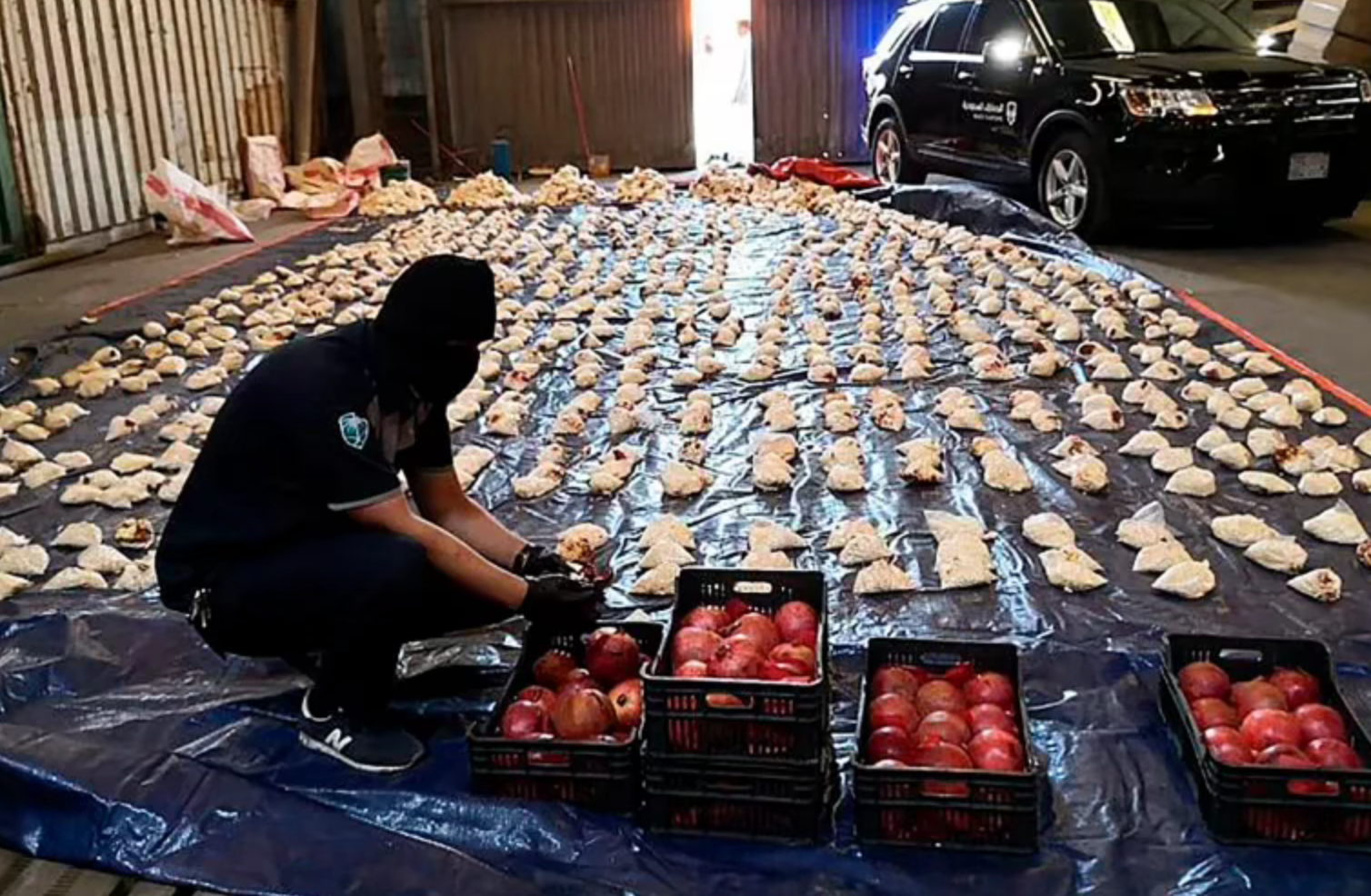
Captagon
BY GABRIEL FANELLI
Growing up in the East Los Angeles area of Boyle Heights I saw murals painted on the sides of laundromats and grocery stores warning of the dangers of drug use. One such mural painted by the Youth of Pico Union portrays a giant laughing cartoon pill choking a young boy while a sinister cartoon syringe lurks in the background. “Drugs are not a laughing matter,” says the mural. The use of art to try and curb the influence of narcotics is commonplace all over the world.
Southeastern Syria is one such place where small towns filled with current and former Islamic State fighters struggle to maintain some semblance of normalcy while caught in the middle of a power struggle between the United States and the growing influence of the Iranian Revolutionary Guard Corps (IRGC) aligned militias in Syria. Just like the murals I saw growing up, art on the sides of laundromats and grocery stores in towns like Hajin and Tayyanah decry the evils of drug use. This drug is Captagon, known colloquially as ‘Father of the Two Crescents’ or ‘Abu Hillalain’ in Arabic, and is a highly addictive mixture of amphetamines and other fillers that has sent users across the Middle East to rehab centers, prisons, or the grave.
The early western coverage of this drug centered on sensationalist headlines telling of ISIS super soldiers emboldened by a mysterious substance; leading many to believe Captagon and its alleged chemically induced courage were the only thing standing in the way of the United States finally defeating the extremist group and bringing peace to the region. Yet pharmacologically speaking, the knockoff Captagon pills found on the streets of Syria and in the halls of Saudi universities are nothing more than a cocktail of uppers which render the consumer as wired as Corporal Ray Persons in HBO’s Generation Kill as he downs more Ripped Fuel.
While some ISIS fighters have proclaimed it took away their fear to fight, more everyday citizens of Gulf states find themselves checking into a rehab for Captagon abuse in the manner of ‘Jesse Spano addicted to caffeine pills’ a la Saved by the Bell, than anything resembling super drug induced terrorism. Somewhere along the way, the cash poor Assad regime took over the manufacture and export of Captagon as a means to keep its economy afloat and fund the civil war. With the help of other state actors such as Iran, Russia and North Korea, Syria has morphed into a narco-dictatorship showing no signs of slowing despite international pressure to crack down on Captagon.
Captagon is a brand name for the drug fenethylline and was originally produced by a German pharmaceutical company in the 1960s as an ADHD medicine. While in the amphetamine family, fenethylline is milder in overall effect than other forms of amphetamine. Due to it not affecting the user’s blood pressure, it was safer for patients with heart conditions. When ingested, fenethylline metabolizes into amphetamine and theophylline which is a bronchodilator and mild stimulant much like caffeine. As with many medications, alternative uses sprang up and it began to be widely used to treat depression and narcolepsy. After a ban on the legitimate production of Captagon in the 1980s, remaining stockpiles were moved to Bulgaria and illicit production of counterfeit pills began with the two compounds fenethylline is metabolized into. Many of the ingredients could be purchased in bulk from China and India with no oversight. For the next 20 years organized crime rings in the Balkans and Turkey spirited counterfeit pills into the Middle East. (Note: All mention of illicit Captagon going forward will be spelled “captagon” to differentiate it from the pharmaceutical brand name.).
According to the European Monitoring Center for Drugs and Drug Addiction, forensic analysis of seized captagon pills is extremely limited, but cursory analysis shows amphetamine and caffeine as the two main ingredients. Other confiscated pills from Saudi Arabia have contained ephedrine, chloroquine, quinine, theophylline, and paracetamol. Actual percentages of compounds per pill will differ drastically. A seized shipment of captagon by the DEA in Iraq in 2009 contained roughly 7-20 mg amphetamine, 30-65 mg caffeine 14-39 mg theophylline and between 9-21 mg paracetamol per pill. Percentages will differ with every seizure across the globe as there is no centralized standard for its manufacture other than the telltale double crescent moons stamped on the front of the pill.
Illegal use of captagon goes back to the late 1980s where French cyclists and rugby players used the pill to gain a competitive advantage.Since the international ban of legitimate Captagon, use and abuse of the remaining legitimate stockpiles of the drug, as well as counterfeit pills, were recreational at best. Dubbed “poor man’s cocaine” the modern use of captagon in the Middle East has been relegated to universities, underground clubs and in working class industries such as long-haul truckers. While Islamic State fighters have been reported to use captagon, they are not a large enough customer base to keep the drug trade alive. However, the gruesome nature behind their alleged use is enough to tie captagon to the evils of terrorism.
One soldier from the Syrian Democratic Forces (SDF) told me in 2023 about his experience during the Siege of Kobani going up against what he called “fearless soldiers” who would take captagon before conducting suicide attacks and engaging in protracted battles. It is alleged that bags of pills would be found next to the bodies of deceased ISIS fighters. The largest units within the SDF are the People’s Defense Unit (YPG) and their all-female counterpart the YPJ. After six months of fighting between 2014 and 2015, the SDF managed to retake Kobani and the surrounding villages. This battle was the first major victory the SDF had over ISIS and signaled the start of their decline. After the liberations of Raqqa in 2017 and Baghouz in 2019, major combat operations against ISIS ceased. Other anecdotal tales of the Islamic State’s use of captagon claimed they would consume captagon before engaging in rape and torture sessions and would force their victim to ingest it so they could endure the pain and last longer. While there is no hard proof that I can find for any of this, anyone hearing this allegation would begin to associate captagon with Islamic terrorism’s worst atrocities. Some of these stories would help the Assad regime obfuscate their vital role in the production and spread of captagon.
The chaos of the Syrian Civil War became an incubator for the spread of captagon. Sanctions placed on the Syrian government in the wake of allegations of war crimes led the Assad regime to take up the drug trade to not only pay the wages of their soldiers, but to keep the economy afloat entirely. In comes the 4th Division of the Syrian Army, a pseudo national guard unit run by Bashar Al-Assad’s brother Maher. Maher was the mastermind behind the violent reaction to Arab Spring inspired protestors in 2011 which turned the protests into the civil war. He has been accused of many war crimes along the way. It is alleged that Maher is behind the chemical weapons attack in Ghouta which killed close to 1,800 people in 2013. Nicknamed ‘The Chief’, Maher has proven as ruthless towards enemies of the Syrian state as he had loyalty to his older brother Bashar. It wasn’t until he took over the 4th Division in 2018 that this unit took up a critical role in the Syrian economy.
A BBC interview with an anonymous former 4th Division officer for the documentary Addicted to Captagon claimed that the men in the unit turned to smuggling to keep financially afloat and used army assets to conduct their clandestine operations to transport drugs, weapons, and even terrorists around the country. Given the 4th Division’s elite status, they were the only unit capable of moving about freely without scrutiny from other entities within the Syrian security apparatus. Even though it was common knowledge Maher controlled the captagon trade, there wasn’t physical evidence of regime involvement until two militias clashed in Suwayda in southwestern Syria.
Suwayda was controlled by a regime aligned militia since 2020 under the command of a man named Raji Falhout. Falhout’s militia was composed of roughly 60 local men and some from the military intelligence branch of the Syrian Army and they were extremely ruthless in suppressing protests by carrying out extrajudicial killings. His militia was challenged by rival militias under the banner of Rijal al-Karama or Men of Dignity – a Druze movement seeking to stop the expansion of Iran’s Shiite influence in Suwayda led by Laith Al-Balous. A battle between the two militias in the summer of 2022 resulted in the death of many of Falhout’s men with Falhout escaping. Al-Balous told Asharq Al-Awsat in August 2022 that the bodies of Falhout’s men were dumped in the roundabout in the middle of the city. Inside one of the compounds used by Falhout, the Men of Dignity discovered machines for pressing various compounds into captagon pills, bags of pills ready for shipment and a Syrian military intelligence ID card belonging to Falhout.
On Falhout’s mobile phone were messages between him and a Lebanese man named Abu Hamza. Hamza’s real name is Hussein Riad Faytarouni. He is openly affiliated with Hezbollah on social media. The Lebanese connection grows even deeper as a picture Faytarouni posted of himself on Facebook with legendary Lebanese drug dealer Noah Zaiter was discovered. If the 4th Division wasn’t manufacturing the pills themselves, they were getting them from Hezbollah. In the summer of 2023 the Swiss State Secretariat for Economic Affairs (SECO) sanctioned Raji Falhout listing him as a Syrian military intelligence commander involved with the captagon drug trade.
While the Assad regime turned to drugs for their survival, neighboring countries such as Jordan were fighting to push back a drug which they saw as a threat to the overall wellbeing of Jordanian society as captagon addiction ravaged families and destroyed the lives of both the rich and the poor. Syrian citizens catching wind of the captagon trade wanted in. The unemployment rate during the civil war hovered close to 9 percent. Even those who had jobs made only an average of $15 per month. The captagon trade was so lucrative that dealers were willing to offer well over $10,000 to anyone willing to successfully smuggle captagon over the border to Jordan. The Jordanian military were not about to go toe to toe with the 4th Division, but they could do something about individual smugglers. Reuters reported in January 2022 that a Jordanian Army officer was killed during a shootout that ensued trying to stop one such smuggling operation. The Jordanian rules of engagement immediately changed, and they took a shoot on site posture.
Many estimates put the value of the drug trade at close to six billion dollars per year – but that focuses only on projections based off seized pills. The actual value is likely many more billions of dollars. At the same time local Syrian news channels ran stories how the Assad regime was successfully cracking down on the captagon trade. Large shipments of captagon coming from regime-controlled ports in Latakia were being seized in Europe. One such seizure was conducted by Italian authorities in the port of Salerno where they impounded three container ships and discovered 14 tons of captagon pills valued at over one billion dollars. Despite success in Europe on cracking down on the illicit captagon trade, Saudi Arabia was still the leading consumer of captagon and Saudi authorities seized over 100 million pills in 2022. Valued at up to $20 per pill on the Saudi streets, this amounts to two billion dollars. A similar sized shipment destined for Saudi Arabia was seized in Malaysia.
Despite the profits of the captagon trade, the regime of Bashar Al-Assad could not run the operations in a vacuum or continue to exist without direct help from Russia, Iran and to some extent North Korea. Rewind to 2004 when much of the illicit captagon was coming out of Bulgaria. Two North Korean diplomats assigned to the North Korean Embassy in Bulgaria were apprehended in Turkey with half a million captagon pills in their possession. Their destination was Syria. At the height of the Syrian civil war North Korea skirted international sanctions through various shell companies to provide Syria material for chemical weapons and ballistic missiles. Syria continues to invite North Korean diplomats and businessmen into the country, and in 2015 opened a park in Damascus named after Kim Il Sung.
Russia continued its relations with Syria in order to preserve their naval base in Tartus. Despite a crippling military defeat in 2018 where regime forces back by Wagner Group were dispatched by U.S. Special Forces teams in Syria, Russia maintained a heavy presence in many of the larger cities in Syria. When Russia became embroiled in Ukraine it had to scale down its operations in Syria significantly. With a drawdown of troop presence, IRGC aligned militias filled the void.
Iran effectively controlled the western side of the Euphrates from the town of Dayr Az Zawr to the Iraqi border city of Al-Bukamal which is a main border crossing with Iraq. It was alleged by some individuals in the SDF, one who I spoke with in Syria in 2023, that the Iranian government has set up captagon manufacturing facilities in order to fund their operations in Syria due to a severely crippled economy. Realizing the severity of the captagon problem, the United States has finally taken concrete steps to stop the Assad regime from continuing to profit from the illicit drug trade. This may be too little too late.
Arkansas Congressman French Hill introduced two bills related to captagon in 2022, along with his Democratic counterpart Jared Moskowitz of Florida: H.R. 4681 – the Illicit Captagon Trafficking Suppression Act and H.R. 6265 – The Countering Assad’s Proliferation Trafficking and Garnering of Narcotics (CAPTAGON) Act. The latter forced the United States to develop a comprehensive interagency strategy to disrupt and dismantle Assad’s illicit narcotics networks. It was in the FY2023 National Defense Authorization Act signed into law.
The Biden Administration released a report on June 29, 2023 detailing their strategy to deal with the captagon trade in destination and transit countries. The Administration plans to implement four lines of effort to tackle the captagon trade: Diplomatic and intelligence support to law enforcement investigations, use of economic sanctions and other financial tools to target the Assad regime-affiliated trafficking network, foreign assistance and training to partner countries and cooperation within multilateral institutions to build counter-narcotics capacity, and diplomatic engagements and public messaging to exert pressure on the Assad regime.
It should be noted that the United States military will continue the defeat of ISIS mission as directed by the Department of Defense and not be utilized in any campaigns to limit the illicit drug trade. However, with top-down protection from Russia and Iran, and some estimates putting the total revenue from captagon north of $10 Billion, the Assad regime will not likely slow their production and distribution – despite promises to the Arab League to do so.
With seventeen countries currently active in the trafficking network, the United States and its international partners have their work cut out for them. Meanwhile, 40 percent of Jordanian prisons are filled with inmates locked up for drug offenses. Rehab centers are filled with captagon abusers. Jordan may have the infrastructure to tackle such an issue, but war-ravaged countries like Iraq are hard pressed to do anything meaningful while their citizens do their best to deal with the psychological and physical trauma decades of war have brought to their doorstep. Often, captagon is the cheapest, and deadliest route.


